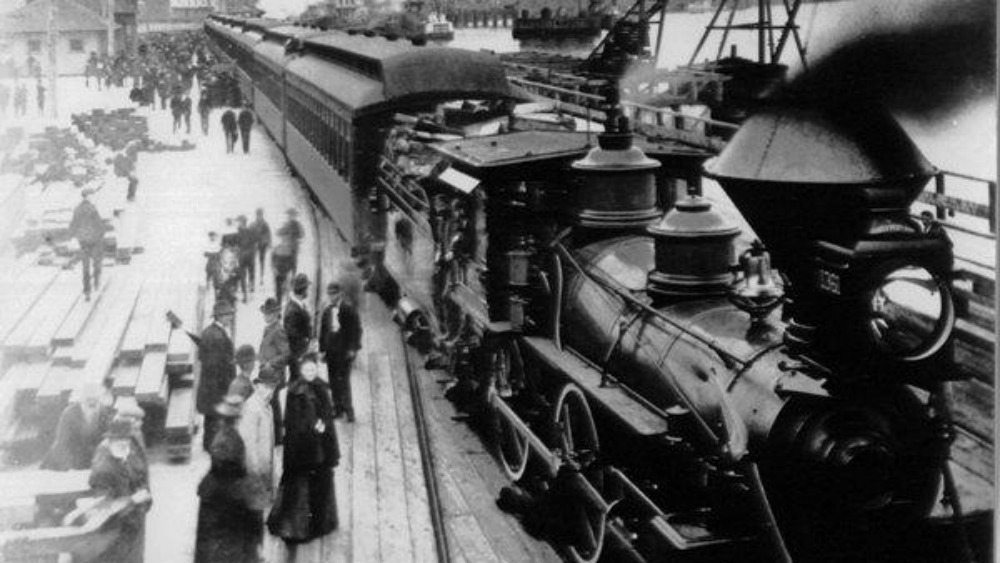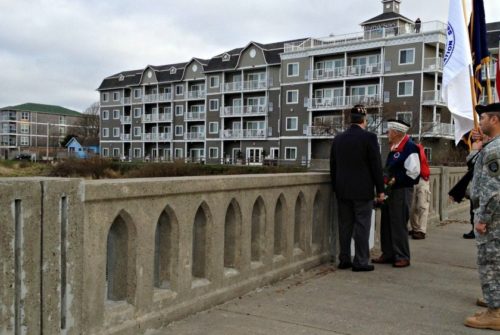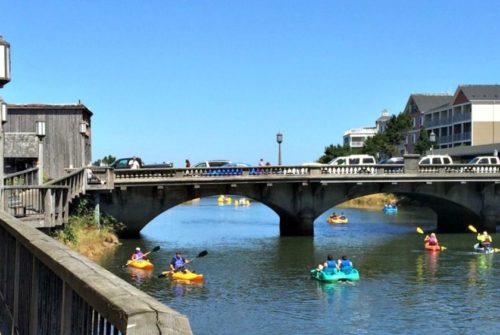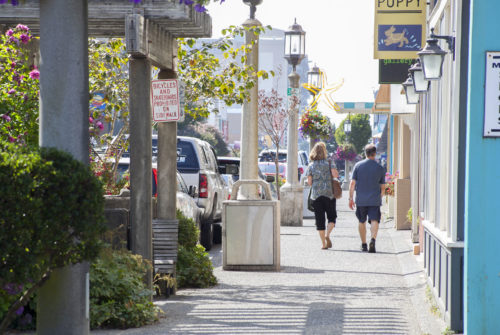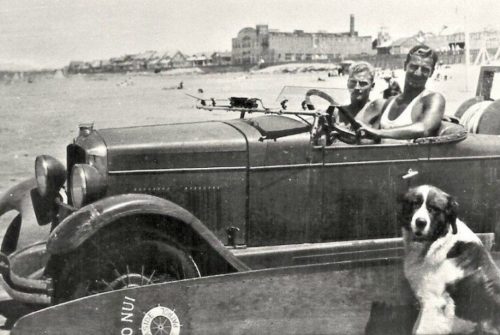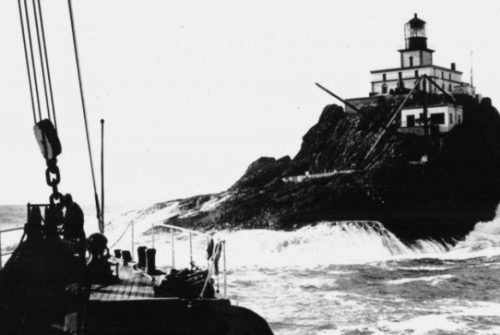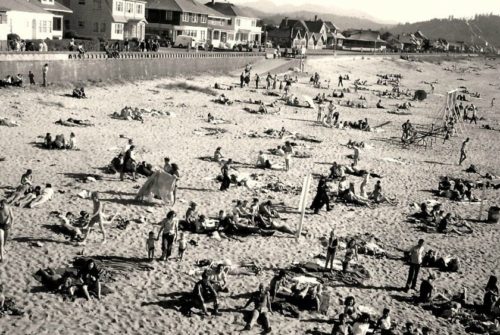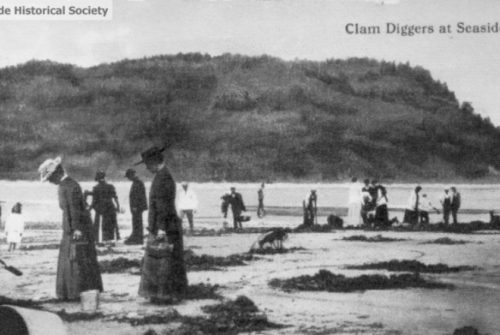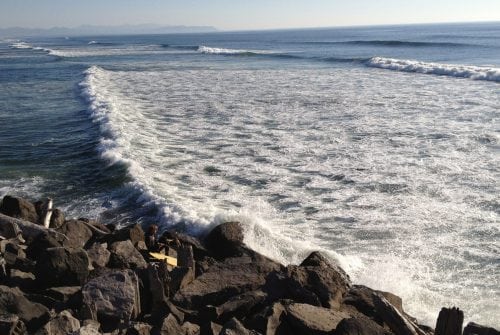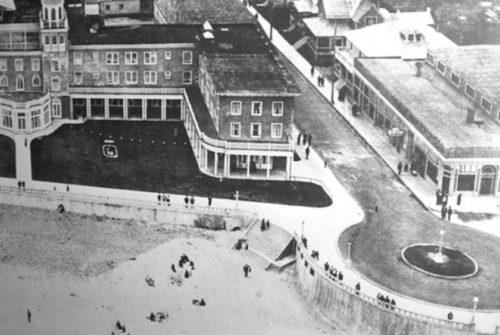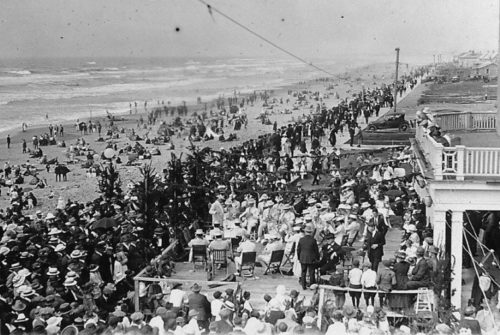Modernity came to Seaside with the arrival of the old steam iron horse. With the construction of a railroad that ran between Young’s Bay and Seaside in 1888, the somewhat isolated North Coast became even more accessible to settlers, vacationers, and trade interests. To escape Portland’s summer heat, families would make the journey to relax and languish on Seaside’s temperate beach. In 1888, Portlanders essentially took a boat trip west down the Columbia River and then caught the train from Young’s Bay and journeyed 15 miles south to Seaside.
However, in 1898, the railroad system evolved and stretch from Portland to Astoria along the South bank of the Columbia River. The photo displayed here shows the train in 1898 leaving for the return journey to Portland. Essentially at this point in history, the trip to Seaside required the train ride to Astoria from Portland, then the crossing of Young’s Bay, and the final train journey from the south banks of the bay down into Seaside. At the time, the average speed of a passenger train was around 20 mph (which included switching, and stops, etc.). According to this speed, the trip from Portland to Astoria in 1898 would take an estimated 5 hours – with the second leg from Astoria to Seaside taking at least an additional hour. Six hours seems pretty modest for a journey to the beach in 1898. It’s no wonder that the path to Seaside became the popular corridor it is today.
